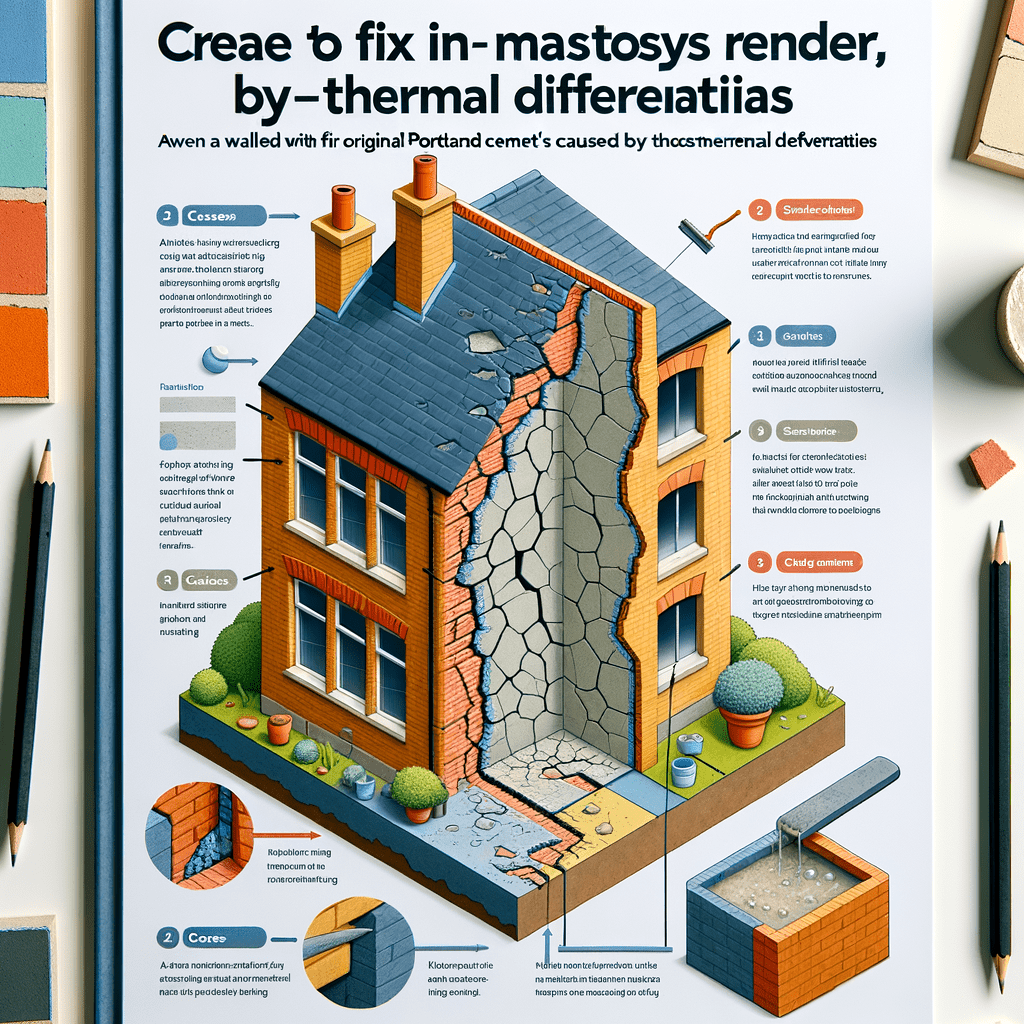Cracks in Masonry Render: Causes, Remedies, and Prevention
Understanding Masonry Render and Its Importance
Masonry render is a protective and decorative layer applied to the exterior of buildings. It serves multiple purposes, including enhancing the aesthetic appeal, providing a weather-resistant barrier, and improving the thermal performance of the structure. However, over time, cracks can develop in the render, compromising its effectiveness and potentially leading to more severe structural issues.
Common Causes of Cracks in Masonry Render
Thermal Differentials
One of the primary causes of cracks in masonry render is thermal differentials. This occurs when there is a significant difference in the thermal expansion and contraction rates between the render and the underlying masonry. For instance, if a rigid Original Portland Cement (OPC) render is applied over a masonry wall bedded on a lime mortar, the differing thermal properties can lead to stress and eventual cracking.
Structural Movement
Buildings naturally settle over time, and this movement can cause cracks in the render. Structural movement can be due to various factors, including ground subsidence, changes in moisture content in the soil, or even vibrations from nearby construction activities.
Moisture Ingress
Water penetration is another common cause of cracks in masonry render. When water seeps into the render, it can freeze and expand during colder months, leading to cracks. Additionally, prolonged exposure to moisture can weaken the render, making it more susceptible to cracking.
Poor Application Techniques
The quality of the render application plays a crucial role in its longevity. Poor workmanship, such as inadequate surface preparation, incorrect mixing ratios, or improper curing, can lead to premature cracking.
Material Incompatibility
Using incompatible materials can also result in cracks. For example, applying a cement-based render over a flexible substrate like timber can lead to differential movement and cracking.
Identifying Different Types of Cracks
Hairline Cracks
Hairline cracks are fine, superficial cracks that are usually less than 1mm wide. They are often caused by minor thermal movements or shrinkage during the curing process. While they may not pose an immediate threat, they can allow moisture ingress if left untreated.
Vertical and Horizontal Cracks
Vertical and horizontal cracks are more significant and can indicate underlying structural issues. Vertical cracks are often caused by settlement or subsidence, while horizontal cracks can result from lateral pressure or thermal expansion.
Diagonal Cracks
Diagonal cracks are typically a sign of structural movement or foundation issues. They can be caused by ground movement, changes in load distribution, or even seismic activity.
Stepped Cracks
Stepped cracks follow the mortar joints in a stepped pattern and are usually indicative of foundation movement or subsidence. These cracks can compromise the structural integrity of the building if not addressed promptly.
Assessing the Severity of Cracks
Before proceeding with any repairs, it is essential to assess the severity of the cracks. This involves determining the width, length, and depth of the cracks, as well as identifying any underlying causes. In some cases, it may be necessary to consult a structural engineer or a professional surveyor to conduct a thorough assessment.
Monitoring Crack Progression
Monitoring the progression of cracks over time can provide valuable insights into their severity. This can be done using crack monitors or tell-tales, which are devices that measure the movement of cracks. Regular monitoring can help determine whether the cracks are stable or worsening, guiding the appropriate course of action.
Remedies for Cracks in Masonry Render
Hairline Cracks
Hairline cracks can often be repaired using a flexible filler or a high-quality masonry paint. The steps for repairing hairline cracks are as follows:
- Clean the Area: Remove any loose debris or dirt from the crack using a brush or compressed air.
- Apply Filler: Use a flexible filler to fill the crack, ensuring it penetrates the entire depth of the crack.
- Smooth the Surface: Smooth the surface of the filler using a putty knife or trowel.
- Allow to Dry: Allow the filler to dry completely, following the manufacturer’s instructions.
- Paint Over: Apply a high-quality masonry paint to blend the repair with the surrounding render.
Vertical and Horizontal Cracks
For more significant vertical and horizontal cracks, a more robust repair method is required. The steps for repairing these cracks are as follows:
- Clean the Area: Remove any loose debris or dirt from the crack using a brush or compressed air.
- Widen the Crack: Use a chisel or angle grinder to widen the crack slightly, creating a V-shaped groove. This will help the repair material adhere better.
- Apply Bonding Agent: Apply a bonding agent to the crack to improve adhesion.
- Fill the Crack

